Horn of Africa – Kenya and Somalia
HOA: Kenya and Somalia
Somane Mohamed, Acting Secretariat Director
Secretariat Host Organization/ American Refugee Committee (ARC) now known as Alight
Programmatic Focus
CGPP Horn of Africa (Kenya and Somalia) supports interventions to strengthen immunization systems to achieve polio eradication and enhance population immunity among the special populations of nomadic pastoralists, Internally Displaced Persons (IDPs), and hard-to-reach communities along the Kenya-Somalia borders through targeted, integrated immunization and surveillance outreaches. The project supports 97 border health facilities in Kenya and 27 border health facilities in Somalia. CGPP Kenya integrates community-based surveillance for five priority zoonotic diseases – anthrax, trypanosomiasis, rabies, brucellosis and Rift Valley fever – to strengthen Global Health Security. Community Health Volunteers (CHVs), Community Mobilizers (CMS), Community Animal Disease Reporters (CDRs) and Animal Health Assistants (AHAs) function as the primary linkage between community members, health facilities and veterinary services. The project incorporates COVID-19 activities at no cost through the polio platform to protect focal communities in both countries from the pandemic. In FY20, CGPP leveraged its existing community-based surveillance and social mobilization network to integrate COVID-19 reporting and prevention activities through the implementing partners.
Implementation Focal Sites
In 2021, CGPP HOA directly supports 97 cross-border health facilities in six Kenya counties (Garissa, Lamu, Wajir, Mandera, Marsabit and Turkana) and Kamukunji sub-county in Nairobi County, which is home to many Somali and Ethiopian refugees. In Somalia, the project links with 27 health facilities in three regions bordering Kenya and Ethiopia (Bardere, Elwak, Belet-Hawa, Luq and Dollow districts in Gedo region, and Afmadow and Badhadhe in Lower Juba region and Rabdure and El Barde districts in Bakool region.)
Implementing Partners
Five international NGOs– American Refugee Committee, International Rescue Committee, Catholic Relief Services, World Vision-Kenya, Adventist Development and Relief Agency-Kenya – and one local NGO, Somali Aid, a local NGO.
Overview
The Horn of Africa experienced a wild poliovirus outbreak in April 2013 with a record number of 223 cases: 199 in Somalia, 14 in Kenya and 10 in Ethiopia. While the outbreak occurred primarily in Somalia, it quickly spread to Kenya and Ethiopia. The Somalia polio cases belonged to cluster N5A that had been circulating in northern Nigeria since 2011. At around the same time, the Global Polio Eradication Initiative (GPEI) entered a new phase with a significant reduction in case counts in endemic countries and a heightened recognition of the risk for the international spread of the virus. In May 2014, WHO declared polio a public health emergency and issued recommendations requiring proof of polio vaccination for travel to and from polio-afflicted countries. CGPP HOA was established in 2014 to prevent and respond to any future outbreaks by building upon existing NGO child survival experience and expertise.
Today, CGPP HOA operates in insecure border districts affected by insurgent attacks, communal violence over grazing lands, and conflict-based mass migrations; political instability and weak health systems additionally contribute to cases of circulating vaccine-derived poliovirus. Frequent cross-border movement of the high-risk mobile populations between Kenya and Somalia and low population immunity in the region place the area at risk for ongoing transmission. The project employs an array of strategies to achieve high population immunity levels and increase vaccination uptake, such as the synchronization of routine immunization services between border villages, integration of vaccination outreaches with nutrition emergency response, and the active participation of religious and community leaders.
In collaboration with WHO and Kenya and Somalia Ministries of Health, the CGPP began holding cross-border meetings in October 2014 – a significant and instrumental move that would shape a systematic, unified and well-coordinated response in the form of the Cross-Border Health Initiative (CBHI). Known as the “cross-border people,” the project aims to ensure the vaccination of all cross-border populations and supports the detection of suspected cases of AFP. CGPP HOA conducts joint case investigations of trans-border AFP cases, and supports all polio SIAs by meeting monthly to support mapping and updating of cross-border villages, crossing points for outreach services, synchronizing polio campaigns and supporting permanent and temporary vaccinations posts during immunization outreaches and SIAs.
CGPP HOA trains community mobilizers (CMs) to support the national cadre of Community Health Volunteers (CHVs) in Kenya and Somalia. CGPP CMs work closely with the CHVs, provide health education, conduct AFP surveillance, and mobilize communities to vaccinate children. The CHVs act as the critical link between the hard-to-reach communities and 124 health facilities, providing essential support to understaffed health facilities, including defaulter tracing. They also work with Care Groups to ensure improved community awareness, mobilization, and community members’ participation to improve polio and routine immunization efforts.
In FY20, CGPP volunteers held 302,488 household visits in Kenya and Somalia for 2,465,614 people with polio and AFP surveillance messages. In all, CGPP HOA supported 756 integrated immunization and surveillance outreach sessions for nomadic pastoralists and hard-to-reach border communities in Kenya and Somalia, reaching 35,975 children with OPV3.
In Kenya during FY20, project CMs visited 44,545 households to conduct AFP active case search, contributing 46 of 55 (84%) reports of suspected AFP cases; 13 of the 46 (29%) cases identified as nomadic pastoralists. During the same period in Somalia, CGPP CMs reached 137,275 households with 42,194 children under 15 years old for active case search. They reported 70% of the 40 total NPAFP cases; eight originated from mobile/nomadic populations.
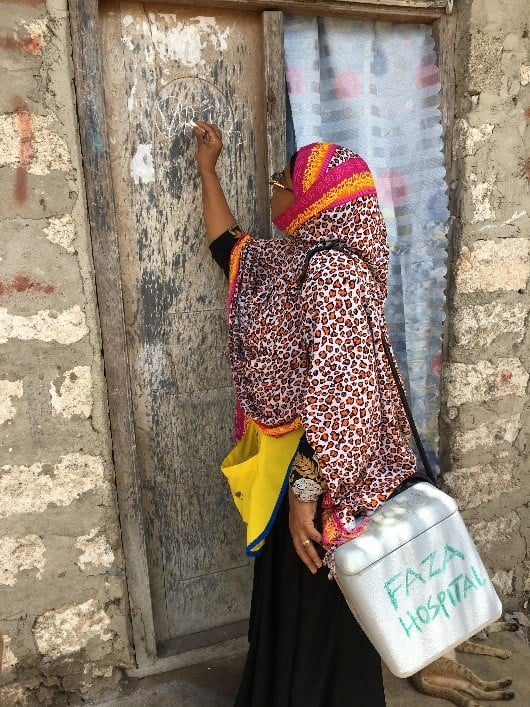
A Community Health Volunteer marks the door of a vaccinated household in Faza settlement located in Kenya’s Lamu County
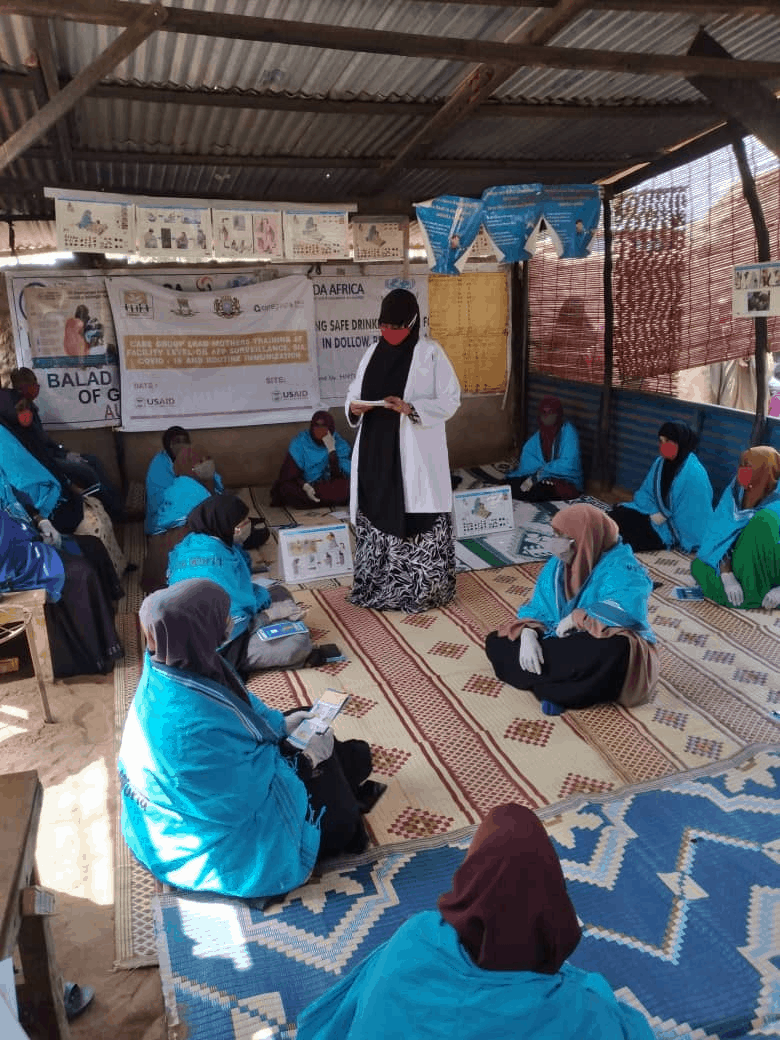
A training of Care Group lead mothers in Belet-hawa district in Gedo region in Somalia addresses COVID-19 prevention and social mobilization efforts for polio activities
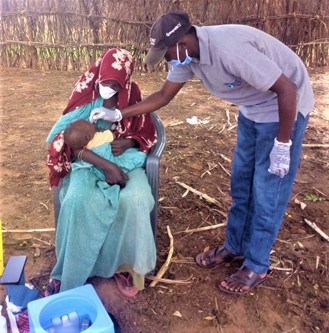
A Community Mobilizer in Mandera County in northern Kenya administers Oral Polio Vaccine during an integrated immunization and surveillance outreach during the COVID-19 pandemic

Reaching hard-to-reach populations along the Kenya-Somalia border in Mandera County.
SECRETARIAT STAFF
Somane Mohamed, Acting Secretariat Director
Yusuf Ibrahim Ajak, M&E Coordinator
Abdirahman Ibrahim Adan, GHSA coordinator
Abubakar Salah Farah, Program Officer
PROJECT BULLETINS
CGP-GHS HOA Newsletter (April 2023)
CGP-GHS HOA Newsletter (July – September 2021)
CGP-GHS HOA Newsletter (April 2021 – June 2021)
CGP-GHS HOA Newsletter (January 2021 – March 2021)
CGP-GHS HOA Biannual Newsletter (October 2019 – March 2020)
CGP-GHS HOA Biannual Newsletter (April 2020 – September 2020)
Quarter 1 FY23
CGP-GHS-HOA Bi-Weekly Bulletin FY23 Q1 (Week 25)
Quarter 2 FY22
CGP-GHS-HOA Weekly Bulletin FY22 Q3 (Week 9)
Quarter 1 FY22
CGP-GHS-HOA Weekly Bulletin FY22 (Week 13)
CGP-GHS-HOA Weekly Bulletin FY22 Q2 (Week 1)
CGP-GHS-HOA Weekly Bulletin FY22 Q2 (Week 2)
CGP-GHS-HOA Weekly Bulletin FY22 Q2 (Week 3)
CGP-GHS-HOA Weekly Bulletin FY22 Q2 (Week 4)
CGP-GHS-HOA Weekly Bulletin FY22 Q2 (Week 5)
CGP-GHS-HOA Weekly Bulletin FY22 Q2 (Week 6)
CGP-GHS-HOA Weekly Bulletin FY22 Q2 (Week 8)
CGP-GHS-HOA Weekly Bulletin FY22 Q2 (Week 12)
CGP-GHS-HOA Weekly Bulletin FY22 Q3 (Week 1)
CGP-GHS-HOA Weekly Bulletin FY22 Q3 (Week 2-6)
CGP-GHS-HOA Weekly Bulletin FY22 Q3 (Week 8)
Quarter 4 FY21
CGP-GHS-HOA Weekly Bulletin FY21 (Week 35)
CGP-GHS-HOA Weekly Bulletin FY21 (Week 36)
CGP-GHS-HOA Weekly Bulletin FY21 (Week 37)
CGP-GHS-HOA Weekly Bulletin FY21 (Week 38)
CGP-GHS-HOA Weekly Bulletin FY21 (Week 39)
CGP-GHS-HOA Weekly Bulletin FY21 (Week 40)
CGP-GHS-HOA Weekly Bulletin FY21 (Week 41)
CGP-GHS-HOA Weekly Bulletin FY21 (Week 42)
CGP-GHS-HOA Weekly Bulletin FY22 (Week 5)
CGP-GHS-HOA Weekly Bulletin FY22 (Week 8)
CGP-GHS-HOA Weekly Bulletin FY22 (Week 9)
View past bulletins here
NEWS
Wild Polio Free Africa – A note of congratulations from CGPP HOA
REPORTS AND RESOURCES
Technical Brief: Continuity of CGP-GHS Activities In Kenya During COVID-19
The Cross Border Health Initiative for Polio Eradication Operation Guide
Cross Border Health Coordination Meeting Reports:
Cross Border Collaboration Meeting Report, Arua Uganda 25_26 September 2018
Wajir, Kenya Joint Cross Border Health Coordination Meeting Report – April 2018
Nairobi, Kenya Joint Cross Border Health Coordination Meeting Report – December 2017
TECHNICAL ARTICLES
Arale, A.; Lutukai, M. ; Mohamed S.; Bologna L.; Stamidis K.V. (2019) Preventing importation of poliovirus in the Horn of Africa: The success of the cross-border health initiative in Kenya and Somalia. Am. J. Trop. Med. Hyg., 101(Suppl 4), pp. 100–106.
Okiror, S. O., Bisrat, F., Lutukai, M., Bhui, B. R. (2015). Community-based surveillance on polio eradication in the Horn of Africa. African Health Monitor, 19, 44-45.
Okiror, S. O., Kisanga, A., Bhui, B. R. (2015). Cross-border Initiative on Polio Eradication in the Horn of Africa. African Health Monitor, 19, 51 – 52.
Support where it’s needed most.
Select a country below to find out more about our efforts and the real people on the front lines.
Graduated Countries
BANGLADESH | NEPAL


